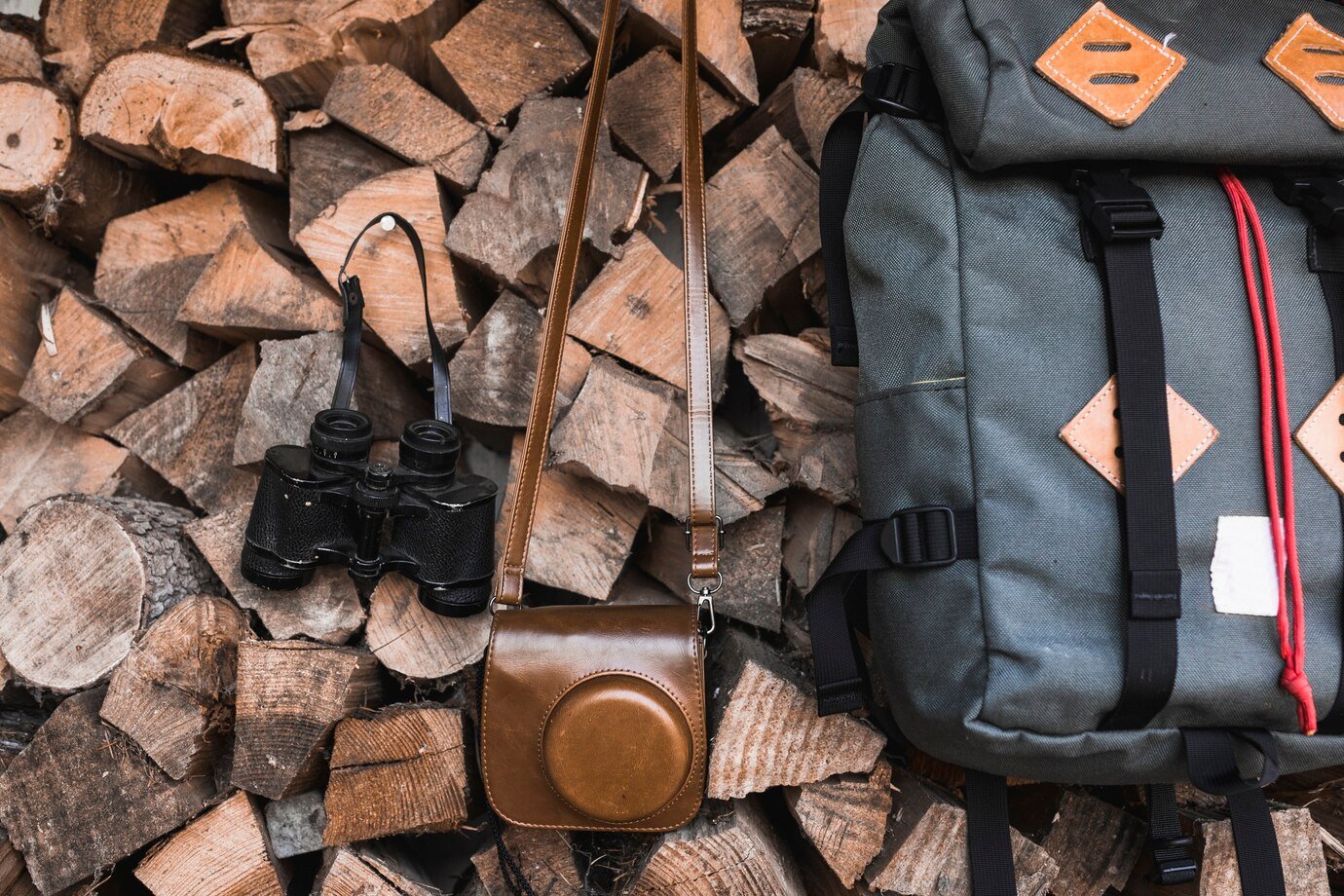People love to spend money on gear: especially hikers and campers. But why is getting outside becoming so expensive, and how can you save on these outrageously priced items? How do you find cheap hiking gear?
Here are some easy ways you can make hiking gear cheap. By using affordable alternatives to otherwise non-budget-friendly items, you can save on gear and spend on experiences.
Related: UNIQLO Review: The Best, Most Underrated & Affordable Clothing for Hiking & Travel
1. Plastic Bags & Garbage Bags vs. Expensive Dry Sacs
$20 for a 5L dry sac? And I need them for all of my stuff? I think not. Though plastic bags are far from environmentally friendly, on a serious budget there’s no better option. Here’s a minimalist system:
- Sleeping bag & camp clothes –> dry sac
- Trail clothes –> plastic bag
- Sleeping mat –> plastic bag
- Toiletries –> random stuff sac
- Electronics and headlamp –> dry sac
- Food –> dry sac, for conversion to a bear bag
Potential Cost: 6 dry sacs x $20 each = $120
Hacker Cost: (3 dry sacs $20 total) + (3 plastic bags x $0 each) = $20
2. One Mug vs. Camping Specific Dinner Sets
One plastic or enamel mug is all you need. None of this plate, bowl, full set of cutlery, mug, and thermos stuff. You probably have something that would work from home – a plastic Tupperware, a gimmicky cup you got for free at Dave & Busters, a crappy enamel mug, or a microwave-safe plastic bowl.
The mug/bowl shape is important for when you want tea or coffee, and whatever meals you’re cooking on the trail can and should be eaten from the same vestibule. My go-to is this $12 backpacking mug from GSI which be found at most outdoor stores or on Amazon.
Potential Cost: 1 plate + 1 bowl + 1 mug = $16
Hacker Cost: 1 mug = $4, or free, plus a whole whack of space (and dishes) saved
3. Wal-Mart Woolies vs. Fancy Hiking Socks
After walking 8-10 hours a day through mud, rivers, and peat moss, your socks aren’t quite as fresh and fluffy as they were when you saw them in the store. After a few days in the same pair, you’re not sure if the stains will ever come out.
For $30, you can get one pair of luxury hiking socks. For $20 at Walmart, you can get 8 pairs of mostly non-cotton work socks that do a mighty fine job in most situations (I wouldn’t trust these in the extreme cold).
A nice middle ground is finding medium-quality hiking socks at a medium price, such as the Kirkland Merino Hiking Socks. These socks made it on my list of 6 Items I Never Leave Without.
Potential Cost: 1 pair of mid-weight hiking socks ($20) + 1 pair of liner socks ($12) = $32 per “pair”
Hacker Cost: 1 pack of 8 Walmart socks ($20) = $2.50 per pair
4. Sticks vs. Hiking Poles
On my first long-distance hike (which also happens to be my longest hike to date), I refused the notion of poles. I thought poles were for old people, weaklings, or otherwise incapable humans.
3 days in with 25lbs+ on my back, I blew out my right knee with more than 450km of trail to go. By the end of the second week, I had found new best friends in sticks that became hiking poles. Now, they too are on my list of must-haves on a hike.
Depending on where you are hiking, there’s a decent chance you’ll be able to use the gifts of Mother Earth and find your hiking poles rather than shell out on a fancy set of poles from the store. It’s not ideal, of course, and you’re waging a bet: on The Fishermen’s Trail in Portugal where bringing my poles meant checking my bag and paying a steep fee, I opted for the natural sticks and bamboo I would (luckily) chance upon.
A note on safety: I always suggest using hiking poles. They save your knees in the long run and help you keep your balance over tricky terrain. If you don’t want to buy expensive telescopic poles but don’t want to risk not finding sticks, buy ski poles! They are usually a fraction of the price of hiking poles and do the same job.
Potential Cost: New hiking poles = $110
Hacker Cost: Bamboo or other sticks you find on the trail = $0
5. Running Shoes vs. Backpacking Boots
Depending on the trip/trail, it is often not completely necessary to buy $300 backpacking boots. If you’ll be on relatively flat ground with no climbing, clambering, or slippery and wet conditions, you might be able to squeak by with your old pair of running shoes.
Of course, they won’t provide the support, traction, or protection a trail shoe would. I wore my running shoes in Portugal, where the terrain was flat and sandy. This saved a great amount of weight as well, allowing me to walk longer!
Potential Cost: New backpacking boots = $250
Hacker Cost: Your running shoes = $0
Although, if you are going to buy backpacking boots, here is my review of the Mammut Trovat Advanced GTX
A note on safety: Running shoes do NOT provide the same support, traction, and protection as hiking boots. While they are a great alternative for easier terrain, well-trodden paths, and light-day hikes, they certainly do not equate to a backpacking boot. Know where you will be hiking, what the terrain will be if it will be wet and slippery, and how much weight you will be carrying before going for this swap!
6. Empty Gatorade Bottles vs Fancy Metal Water Bottles or Hydration Packs
I’m trying not to encourage the use of single-use plastics, but sometimes it’s necessary. Gatorade has done an excellent job of producing surprisingly strong and durable bottles. They hold up fairly well to wear and tear, are lightweight, and this is a great way to give them a second life.
If you think you need a $45 Swell bottle to keep your water chilled for 48 hours, you are mistaken. When was the last time you went on a hike to drink your water 48 hours later? Generally, I still vouch for the Nalgene – but if you can’t bring yourself to buy one of those, then a Gatorade bottle is a great alternative.
PROTIP: If you are bringing eggs on a canoe trip, the Gatorade bottle holds exactly 12 cracked eggs (medium-large size).
Potential Cost: Fancy insulated water bottle, or hydration bladder = $30
Hacker Cost: Re-used Gatorade bottle = $0, or a $15 Nalgene
7. Regular Athletic Clothing vs Hiking Clothing
Why does IceBreaker Merino Wool seem to cost as much as owning and raising a sheep itself? What is it with Arc’teryx and their $1000 jackets? Who ever said that the athletic section in Winners wasn’t good enough???
Here is a quick example of how to use regular people’s clothing to hike in, effectively making your “hiking” attire less than half the cost. Pictured below:
- UNIQLO Airism T-shirt ($9.90) vs IceBreaker Cool-lite T-Shirt ($90)
- UNIQLO Airism hoodie ($29.90) vs Arc’teryx Phasic Sun Hoody ($140)
- Nike Running Shorts from Winners ($12.99) vs The North Face Aphrodite Hiking Shorts ($59.99)
Not pictured, but owned:
- GapFit Studio Joggers ($40) vs prAna Halle Pant ($85)
- Summer Camp Fleece from 2008 (free) vs Patagonia Better Sweater ($119)
- Fleece Mittens with Glove Liners from Dollarama ($3) vs Outdoor Research Sensor Mitts ($43)
- Thrift Store Fleece Pants ($7) vs MEC Fleece Trek Pants ($69)
Potential Cost: Hiking specific clothing = $605.99
Hacker Cost: Regular people clothing = $102.78
And that’s just scraping the surface…
8. Wal-Mart/Canadian Tire Hammock vs Camping Hammock
Hammock camping has skyrocketed in popularity and for some pretty great reasons. It’s comfy, light, cheap, and fun! However, don’t go to an outdoor store to buy one. This is another prime example of the mysterious hiker’s tax. The average user (myself included) doesn’t need a $100 hammock – the $20 ones are just fine.
Potential Cost: ENO Single Nest = $90 + Atlas Suspension System = $40
Hacker Cost: WOODS Backpackers Hammock + included Tree Straps = $29.99 (or this $25 one on Amazon)
9. Aluminium Pot vs Titanium Camping Cookware
Amazon wins this one hands down. Our aluminum pot is one of the greatest investments ever made. Ever. It’s so good that I even wrote an entire post on how this is the best pot for hiking and camping. I’m just comparing this with “camping” aluminum pots, but if you go ceramic or titanium the cost nearly doubles.
Potential Cost: GSI Aluminum Halulite Pot = $51
Hacker Cost: Amazon Aluminum Pot = $20
10. SHARE YOUR GEAR
This is, by far, the easiest way to cut costs. Plus, bringing and having friends to share the moments with is invaluable in any case. Many hands make light work, and shared gear & moments make happy campers. Borrowing friends’ gear and sharing new purchases makes it all a little more accessible!
Potential Cost: Cheapest 2-person tent (1 each) = $165
Hacker Cost: Half that = $82.50, or free if you borrow from a kind friend!
Hiking Gear For Cheap: Bringing it All Together…
There are infinite other ways you can cut your costs when first buying hiking gear and planning a trip. All in all, with these few but easy alternatives, you will have saved a whopping $1268.21!!!! That’s pretty much a return flight to wherever your heart desires.
But If I Want to Buy New, Where Can I Buy Cheap Hiking Gear?
Excellent question, friend! This is something I ask myself all the time. As such, here is a quick list of ideas and resources to help you save on that new down jacket.
Discount hiking Gear sites in Canada and beyond
The Last Hunt – this Canadian website has a whole bunch of epic brands at some serious discounts on outdoor apparel and gear. Although I have yet to buy anything, I certainly waste enough time clicking through and browsing. While they may not always have your size, it is certainly worth checking out before you buy anything new!
Steep & Cheap – the US version of The Last Hunt, Steep & Cheap is owned by Backcountry: a pretty big online retailer of outdoor apparel and gear. It too requires lots of patience and sifting, but can be really great for incredible deals.
Decathlon – has over 1400 stores in 45 countries and is committed to “create innovative, quality, affordable sports equipment and products so as many people as possible, all around the world, can play more.” Frankly, it’s something I can get behind. Their in-house brands cover gear for everything from snowboarding to kiteboarding and crossminton. Whatever crossminton is, anyway…
affordable (or Cheaper) brands for outdoor and hiking gear
I’m a big fan of brands that do more with less. The two brands that come to mind when I think of value for money are Marmot and Mountain Hardwear. If Marmot focused a bit more on Canada, I’m sure I’d own more of their stuff. For a great Canadian brand that makes quality affordable, Mountain Hardwear is a great company.
Again, I endorse UNIQLO as an underrated player in this game.
What are your favorite cost hacks for hiking gear?

